Channelising the power of community
amid Covid crisis
How did a group of organisation come together to find a collective COVID response to the challenges of stakeholders
Disruption in Education caused by the pandemic isn’t recent news anymore. Schools continue to be closed and the entire system of educationists, practitioners and implementers, around the world, are up and running in finding ways to re-establish the strong connection between the child and the teacher. This social distancing time has challenged all of us in our pursuit to support education interventions for all children.
Constant efforts are being made in terms of learning, adapting and innovation to fill in the gaps that the Covid-19 pandemic has created. Towards the same cause, ShikshaLokam came up with the initiative:
“Learn from home – A call for Collective”, that spanned over 6 weeks. The goal of this initiative was to explore how we as a collective of civil-society organisations could work hand in hand to understand the key problems of our stakeholders and build end to end solutions for the same.
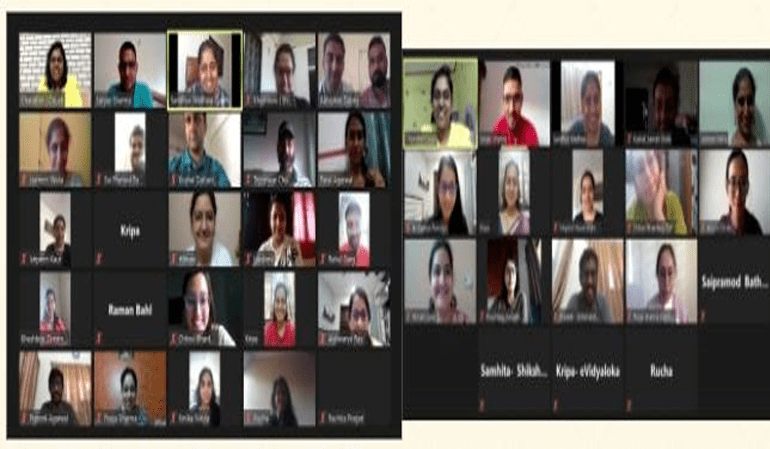
Img 1: Participants in the Learn from Home Collective
This Collective was formed with the objective of enabling continuous learning and minimising learning loss in wake of COVID-19. In the collective, the organizations shared, learnt and co-created solutions as a group and discussed working towards creating a prototype, which were relevant for their stakeholders in the current times. This initiative was also formed for organisations to support each other and realise the power of community.
The Journey: details of the Six Steps
“If I had an hour to solve a problem I’d spend 55 minutes thinking about the problem
and five minutes thinking about solutions.”
-Albert Einstein
Identifying the problem is the first and the most important step of problem solving. With that purpose of identifying problems and co-designing solutions, the entire initiative was divided into six sessions.
Session 1 was about sharing and learning about our stakeholders, their challenges, and existing opportunities. The larger group was divided into sub groups, namely School Leader Engagement Group, State Department Leader’s Engagement Group, Teacher Engagement 1 and Teacher Engagement 2. For session 1, these sub groups were seen coming together to focus on and identifying their stakeholders and sharing the challenges that they face.
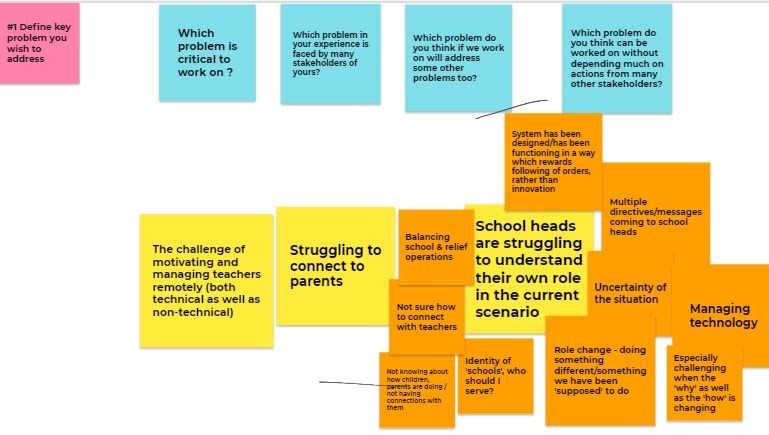
Img 3: School Leader Engagement Group identifying key problems
Session 2 was a deep dive into the challenges identified. The participants came together to prioritise the key challenge/problem of their stakeholders that they wished to solve. Additionally, the groups also chalked out the expected outcome once the problem is solved.
Img 4:State Department Leader’s Engagement Group analysing the problem and attempting to draw solutions
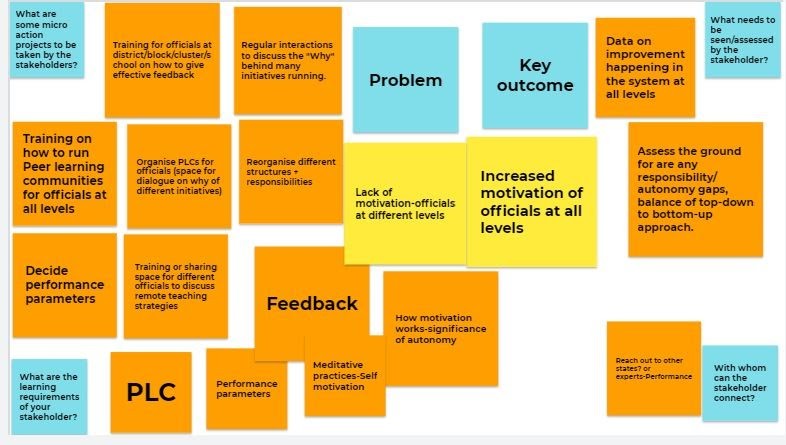
Reimagining solutions was the main topic around which the Session 3 was hosted. It was the first step towards designing the solutions. where the organizations stated the problem statement of their stakeholders clearly, stating the key outcome that would be derived after solving the problem using ShikshaLokam’s Assess-Improve-Learn Cycle theory. This theory suggests that to bring a change in any aspect, we first need to know where to begin the improvement journey, which basically means we need to assess our situation. Once we know about our situation, we can plan how to improve while we learn new concepts related to our process of improvement.
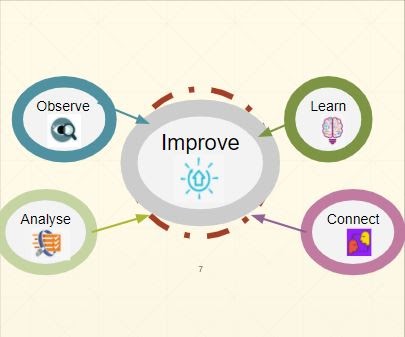
Img 5: ShikshaLokam’s Assess-Improve- Learn Cycle

Img 6: Teachers Engagement groups using the theory to create solutions
In Session 4, the sub-groups chose one solution that they wished to prototype and started designing them.

Img 7: Teachers Engagement groups discussing on creating an improvement project
The teams chose to focus on creating improvement solutions and designed action projects with the learning and assessment elements together hence creating an an end-to-end solution.
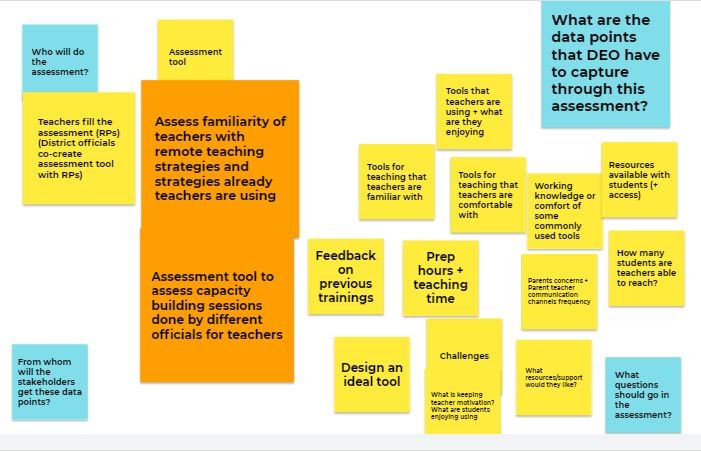
Img 8: Teachers Engagement groups working towards designing the end-to-end solutions
Session 5 was about designing the first draft of the end-to-end solution, where the organizations were introduced to the ShikshaLokam platform capabilities and how the capabilities can support the solutions created.
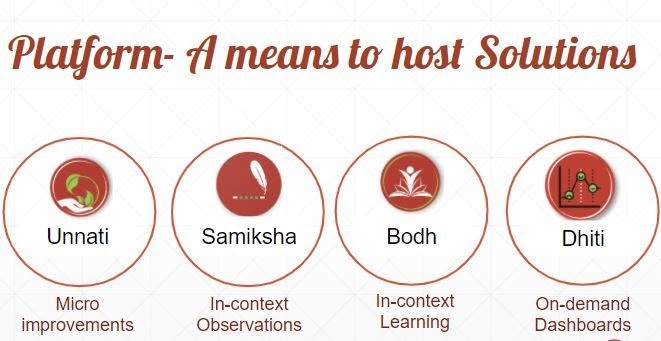
Img 9: ShikshaLokam Platform Capabilities
The last session celebrated the 6 week long journey which saw all the groups sharing their end to end solutions and sharing feedback. We were also joined by three panelists and other network partners who shared their experiences and insights.
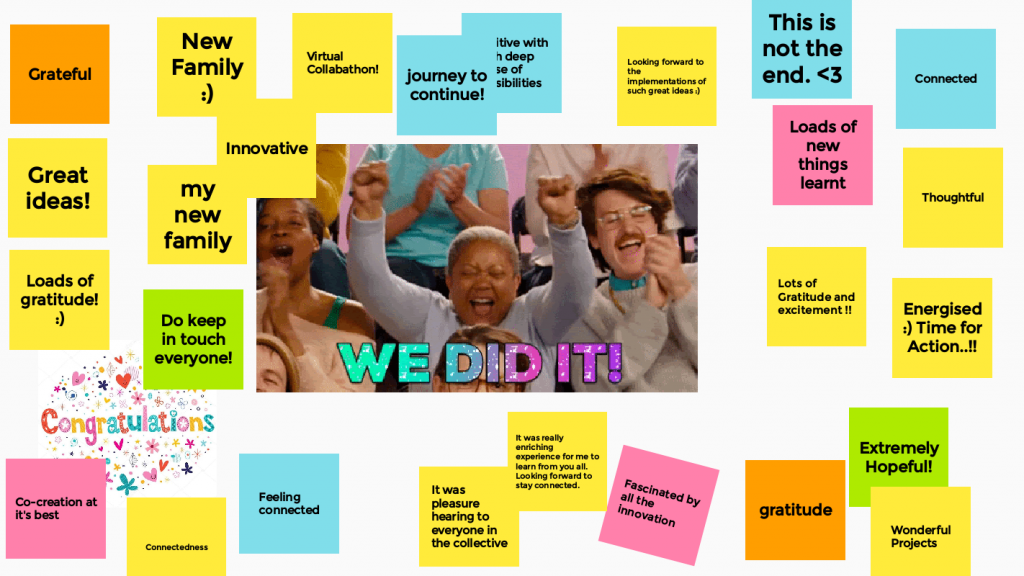
Img 10: Participants Emotion Board
The participants shared their experience towards the end through sharing their emotions and ideas that stuck with them. Prototyping as a part of the journey was something that everyone felt could be done better with the real stakeholders. However the impact of all other sessions was visible in the feedback shared by participant organisations, especially when they mentioned that they wished to take back the Assess-Improve-Learn Cycle theory to their own organisations as a solution design exercise. They also said that the activity helped them to think through various steps to make their solutions robust. The broken down steps for the creating improvements also gave them detailed insights for the same.
As a takeaway from this six weeks learning journey, the Collective is now looking forward to introducing ways in which we can directly involve stakeholders in the ideation and ways in which strong prototypes creation and testing can be done.

